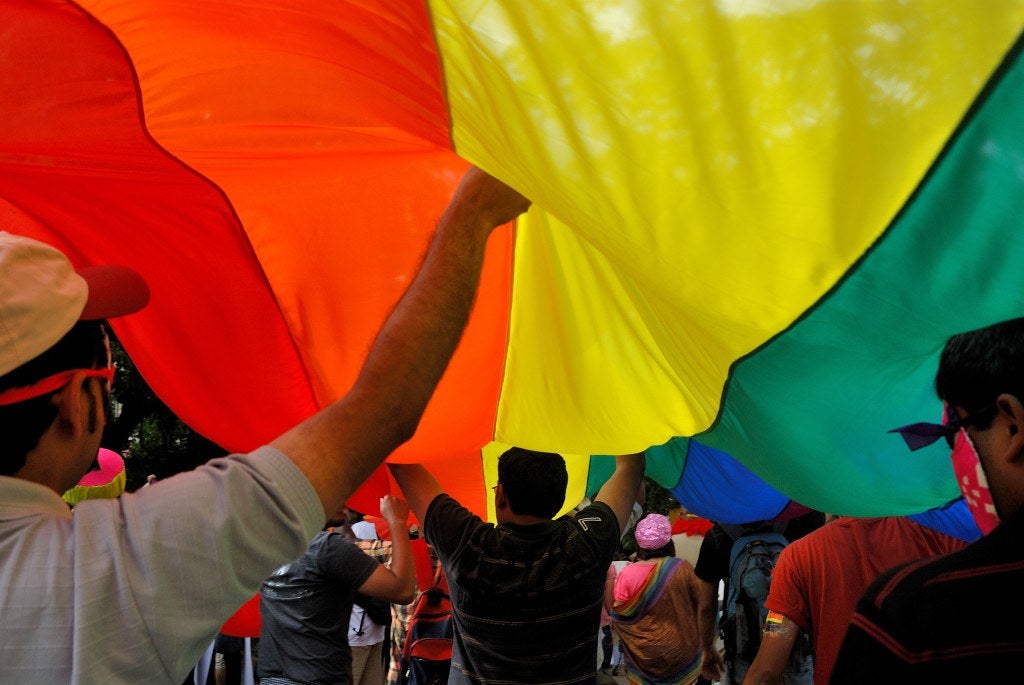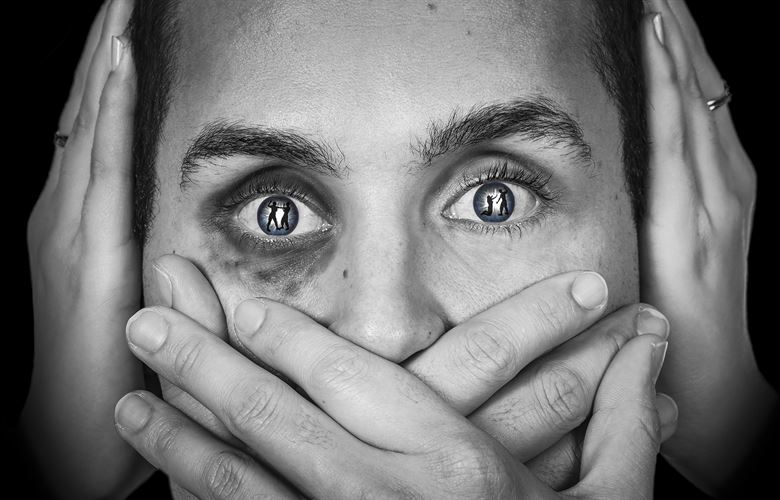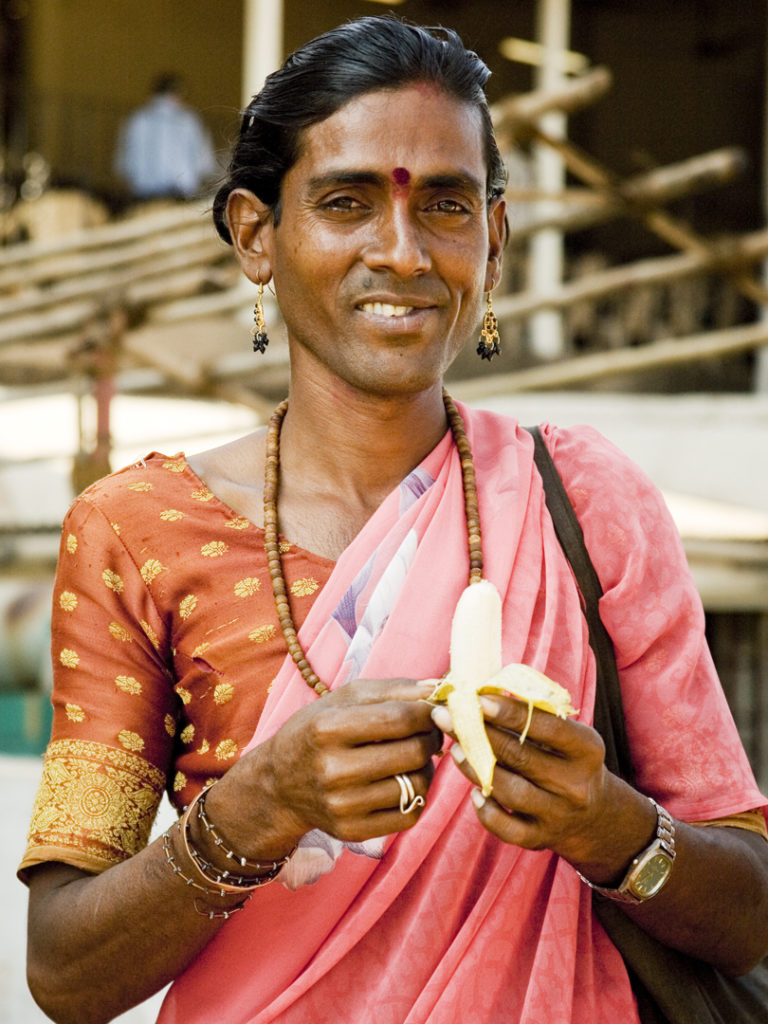Hijra are the third gender recognized predominantly in India, as well as some areas in Pakistan, Bangladesh, and Nepal. It is an encompassing term that includes eunuchs, intersex, and transgender people. Hijra, once seen as valued religious and spiritual healers, are now socially “untouchable” and marginalized people. Today they live in rundown areas called Gharanas.1 This group faces social, emotional, and mental pressures as a result of being ostracized by their communities.
Table of Contents
Gender and Sexuality
The hijra identity is a complex blend of biological, gendered, and sexual identities. Although most hijra are born biologically male, there are some that are born intersex or transition to female later in life.2 They are often mistaken to be impotent and asexual, but many hijra have healthy sex lives.
Terminology within the hijra community can be complicated considering historical meanings, literal translations, and cultural significance. Hijra, kothi, and panthi are the most commonly used terms for the third gender. They are defined in terms of sexual attraction, position preference, and gender presentation.2
Hijra and kothi individuals tend to be traditionally feminine in their gender presentation. Research on the gender presentation of hijra and kothi individuals found that the majority of hijra individuals wore their hair long and wore women’s clothing. Contrary to popular belief, most hijra and kothi are not castrated, though almost half took female hormones and underwent some type of feminizing surgery, according to one study.2 In general, kothi refers to individuals assigned as males at birth who have a sexual attraction to masculinity or men (androphiles). They mainly take the receptive role during anal sex with men. Regarding their self-described masculinity and femininity, kothi described themselves as significantly more masculine than hijra, whereas their descriptions of femininity did not differ significantly.2
Panthi refers to the sexual partners of hijra and kothi, most of which are men.2 Panthi individuals are relatively male-presenting and have a sexual attraction to men. Research found that panthi individuals were bisexual in their self-reported sexual orientations and kothi reported more homosexual and androphilic orientations.2
The gender and sexuality of hijra and kothi people is diverse; it includes various presentations and sexual interests. This diversity is the result of hundreds of years of shifting attitudes towards hijra people that can be seen throughout their history.
History of Hijra People
Hijra individuals, and the third gender as a whole, have existed and had been accepted for millennia. Documents like the Kamasutra and other Sanskrit and Vedic literature reflect their presence and their importance.3 Hijra were thought to have spiritual and religious significance, and played critical roles in various rituals and traditions, such as blessing weddings and childbirths, and performing in ceremonies and festivals. Common religions in India including Hinduism, Buddhism, and Jainism even recognized this third gender in their religious texts. There was a believed biological basis for its existence: a male seed produced a male child, a female seed produced a female child, and both seeds produced a third-sex child.4 Beyond religion, third gender individuals were also discussed in ancient law, medicine, linguistics, and astrology, indicating that hijra were an integral part of Indian society in the past. 5
However, this attitude towards hijra began to change due to the British colonization of India in 1858. Colonizers were not accepting of hijra and rejected their high regard in Indian society. This shift in attitudes caused a series of changes in Indian policy and culture, drastically changing the lives of hijra individuals. British colonizers made efforts to criminalize hijra and their behaviors.4 They implemented policies that forced Western views on Indian society and caused hijra to be seen as deviant. The Criminal Tribes Acts of 1871 and Section 377 of the Indian Penal Code were largely responsible for the negative stigma towards hijra. These laws segregated hijra to their own caste, penalized sodomy, and considered homosexual acts as “criminal offenses”.5 The British disseminated anti-hijra values that would persist for the following decades. These values mainstreamed the dissent towards homosexuality and transgenderism. Only recently have the tides began to change on the treatment of hijra individuals in India.

Transforming Attitudes Towards Hijra
In recent years, the world, including India, has taken steps towards inclusivity. However, since British colonization, India has had a long history of inconsistent stances on LGBTQ+ issues. They have gone back and forth on the legalization of homosexual activity and made erratic decisions on same-sex marriage. In 2014, India’s Supreme Court made a progressive leap when it accepted a third gender that recognized hijra.6 But, this decision has yet to affect the everyday lives of hijra. The Indian government has yet to implement policies that reflect and respect this decision. Hijra lack many basic rights including the right to vote, marry, and claim a formal identity through a passport or other government identification.7 Joya Sikder, one of the most prominent hijra activists, explains that this disparity in policy and reality is due to the government lacking an adequate understanding of hijra.8 This causes the problems that hijra face to persist. Common problems include the lack of job opportunities, lack of access to psychological and medical healthcare, and high risk of being victims of abuse and violence.
Lack of Job Opportunities
Job opportunities for hijra in India are inadequate. The prejudices people hold against hijra often get in the way of their careers. This mainly occurs due to prejudice or a lack of education among people in the workplace. Hijra may be pushed out of their hometowns or kicked out of school and forced to live within the hijra community.9 This typically concludes their education, which becomes a barrier later in life when trying to get a job. Research found that over half of hijra respondents had only attended some schooling and a few had over 10 years of it.10 They may be fired from their jobs by their employers or resign due to the stigma and discrimination.1 Moreover, a third gender option is not available on most job applications, leaving hijra unable to openly apply to jobs and fear being questioned about their gender by a potential employer.7 Therefore, obtaining mainstream jobs is near impossible and even low-level work is unattainable due to employers rejecting hijra in the workplace.9
Unfortunately, even those who have some education are forced to resort to occupations like begging and sex work. Gupta and Sivakami found that 42.4% of hijra were begging and 41.3% were engaging in commercial sex work.10 Social marginalization forces many hijra to follow the same patterns as before the third gender was recognized. Being stuck in this cycle poses a threat to the health of hijra. Commercial sex exposes them to numerous sexually transmitted infections(STIs).11 Reduced risk perception due to lack of education, frequent sex with multiple partners, and lack of consistent condom use contribute to the spread of STIs. In fact, condom use is so low that during their last anal sex experience, only 21.1% of hijra used a condom.2
High-Risk Victims of Abuse and Violence
Due to negative stigma and discrimination against hijra in India, they are frequently victimized. The majority of hijra (56.5%) reported having been victimized in their lifetime, and over a third (37.1%) said they had been victimized within the past year. The forms of victimization that hijra face include demands for money after sex (24.67%), being robbed (13%), being punched, hit, or kicked (7.85%), and being forced to do sexual acts (23.34%). Extortion and blackmail are also common.12 Unfortunately, the hijra community is largely ignored by the government, making this gender violence common. Harassment and abuse by the police can occur, making members of the hijra community reluctant to report these violations to law enforcement. Hence, this malicious treatment persists, causing many hijra to stay trapped in the vicious cycle of abuse.

These horrific experiences cause a large proportion of hijra to consume alcohol and other drugs as a means to cope with their struggles. Reasons hijra cite to justify this alcohol dependency range from needing to forget about their worries, like familial absence or people not caring about them, or to manage rough clients in their sex work life. Sadly, many of them continue their consumption despite knowing the health risks associated with drug and alcohol use. Some engage in this behavior so frequently as an outlet for their tension, that they begin to rely on it. The high-rates of substance abuse are indicative of the mental health issues that surround the hijra community. Researchers found that that 31% of hijra in India die by suicide and 50% of them have attempted suicide at least once before the age of twenty.13 These rates are considerably high compared to the general population, and the true rates are most likely higher considering how little research on hijra has been done.
Lack of Appropriate or Effective Healthcare Access
Despite this community’s desperate need for it, hijra lack appropriate psychological and medical healthcare access. The stigmas and discrimination present in the workplace are found in healthcare as well. Many hijra claimed that they did not see any changes in their healthcare services after their gender identity was legally recognized.7 They reported that they experienced discrimination from medical staff (mainly doctors and nurses), discrimination in obtaining medical referrals, and were criticized by other patients and hospital-goers.7 They are often shamed and looked at strangely in hospitals which discourages them from seeking medical treatment. It is especially crucial for hijra to have access to healthcare considering the risky circumstances they are put in due to social marginalization.
Even places that do provide adequate services only provide sexual health related support, and focus their attention on HIV/STI prevention measures.15 This shows the narrow view that healthcare professionals use when dealing with hijra patients. This view is influenced by the perceived hyper-sexuality of hijra and the stigma around them. However, there are numerous other medical and psychological needs that hijra have. There is a broad area of general health and mental health problems that they face as a result of their traumatized life situations.15 These include gender identity disorder, depression, familial pressures to conform, migration stress, and abuse, among several others.15 Considering what hijra endure, effective general health examinations and mental health evaluations are imperative.
Strategies to Improve the Livelihood of Hijra
Legal recognition of a third gender is a step in the right direction, but many more steps are required in order to see fair and lasting results. The following are strategies that governments can implement to improve the livelihoods of not just hijra people but the third gender and transgender communities as well.
Opening job opportunities and setting reserved quotas for hijra
Requiring companies to give all people equal opportunities to jobs prevents them from discriminating against hijra based on their gender. Having a fair opportunity for employment would give hijra more financial stability, and prevent them from being constrained to sex work and begging which put them at higher risk of harassment, violence, and sexually transmitted infections.
Welfare policy for hijra
A government implemented system that will help fund the physical, material, and financial well-being of the hijra community. This will allow them access to sex reassignment surgery, legal documentation, education, housing programs, etc.
Setting quotas for hijra to get admission into educational institutions
Equal chances at education is critical for both opening opportunities for hijra individuals and encouraging the public to be more accepting and understanding of the hijra community. This will enable hijra to gain knowledge, pursue careers, and breaks down the barrier put up by migration and stigmas.
Introducing gender identity, diversity, and inclusiveness in educational literature
Appropriate education is necessary to promote acceptance and inclusion. Integrating these concepts into lessons and exposing people to them from a young age will encourage people to have more positive attitudes about the hijra community.
Accessible psychological counseling for hijra
Counseling centers or areas within current facilities are needed that cater to the needs of marginalized individuals and provide judgment-free help within a safe space. Protecting the mental health of hijra will help prevent self-harm, suicides, and drug and alcohol abuse.
Accessible physical health services or hijra
Hijras face extreme difficulty when trying to access health care services. They experience discrimination from medical staff, like doctors and nurses, and face stigma from other hospital-goers. Hijra are vulnerable to STIs requiring proper preventative care and treatment. Like with psychological counseling, specific areas are needed that provide care to hijra individuals, at least until the attitudes towards hijra in India becomes more positive.
Conducting more research on hijra
There is a negligible amount of research done on the hijra population. In order to provide the necessary solutions to help the hijra community come out of the cycle of prejudice and discrimination, there needs to be accurate and up-to-date statistics on their demographic.
Implementing policies like these could help the hijra community combat the social, economic, and mental stressors that permeate their life, and prevent any disrespectful treatment of them.
Concluding Remarks
Hijra people constitute a diverse community of genders, gender expressions, and sexual attractions. Attitudes towards the hijra community have fluctuated throughout history, but tend to be discriminatory and prejudiced. Despite legal recognition of a third gender in India, hijra have yet to experience significant changes in their treatment. India and other South Asian countries need to work to foster an environment of acceptance and inclusivity for hijra and other third gendered identities.
References
- Mal, S. “The hijra of India: A marginal community with paradox sexual identity.” Indian Journal of Social Psychiatry, 34, 79-85. 2018.
- Stief, M. “The Sexual Orientation and Gender Presentation of Hijra, Kothi, and Panthi in Mumbai, India.” Archives of Sexual Behaviors 46, 73–85. 2017.
- Sinha A., Goswami D. N., Haldar D., et al. “Sexual behavior of transgenders and their vulnerability to HIV/AIDS in an Urban Area of Eastern India.” Indian Journal of Public Health, 61, 141-143. 2017.
- Michelraj, M. “Historical Evolution of Transgender Community in India.” Asian Review of Social Sciences, 4, 17-19. 2015.
- Hinchy, J. (2019). Governing gender and sexuality in colonial India: The Hijra, c.1850-1900. Cambridge: Cambridge University Press.
- McCarthy, J. (2014, April 15). In India, Landmark Ruling Recognizes Transgender Citizens. Retrieved May 24, 2019, from https://www.npr.org/sections/thetwo-way/2014/04/15/303408581/in-india-landmark-ruling-recognizes-transgender-citizens
- Aziz A. & Azhar S. (2019). Social Exclusion and Official Recognition of Hijra in Bangladesh. Journal of Research on Women and Gender, 9, 3-19.
- Hossain, A. (2017) The paradox of recognition: hijra, third gender and sexual rights in Bangladesh, Culture, Health & Sexuality, 19, 1418-1431.
- Jebin, L., Farhana U. (2015). The Rights of Hijra in Bangladesh: An Overview. Journal of Nazrul University, 3.
- Gupta A. & Sivakami M. (2016). Health and Healthcare Seeking Behaviour among Transgender in Mumbai: Beyond the Paradigm of HIV/AIDS. Social Science Spectrum, 2, 63-79.
- Usman A., Khan A. H., Bashir Q., et al. (2018). Pushed to the Margins: Post-diagnosis Experiences of Hijra (Transgender) Sex Workers Living with HIV Infection. Pakistan Journal of Psychological Research, 33, 15-34.
- Li, D.H., Rawat, S., Rhoton, J., et al. (2017). Harassment and Violence Among Men Who Have Sex with Men (MSM) and Hijra After Reinstatement of India’s “Sodomy Law.” Sexuality Research and Social Policy, 14, 324-330.
- Virupaksha, H. G., Muralidhar, D., & Ramakrishna, J. (2016). Suicide and Suicidal Behavior among Transgender Persons. Indian journal of psychological medicine, 38, 505–509.
- Melesse, D. Y., Shafer, L. A., Shaw, S. Y., et al. (2016). Heterogeneity Among Sex Workers in Overlapping HIV Risk Interactions With People Who Inject Drugs. Medicine, 95, e3085.
- Jayadeva, V. (2017). Understanding the Mental Health of the Hijra Women of India. The American Journal of Psychiatry, 14, 7-9.
Last Updated: 6 March 2020.


